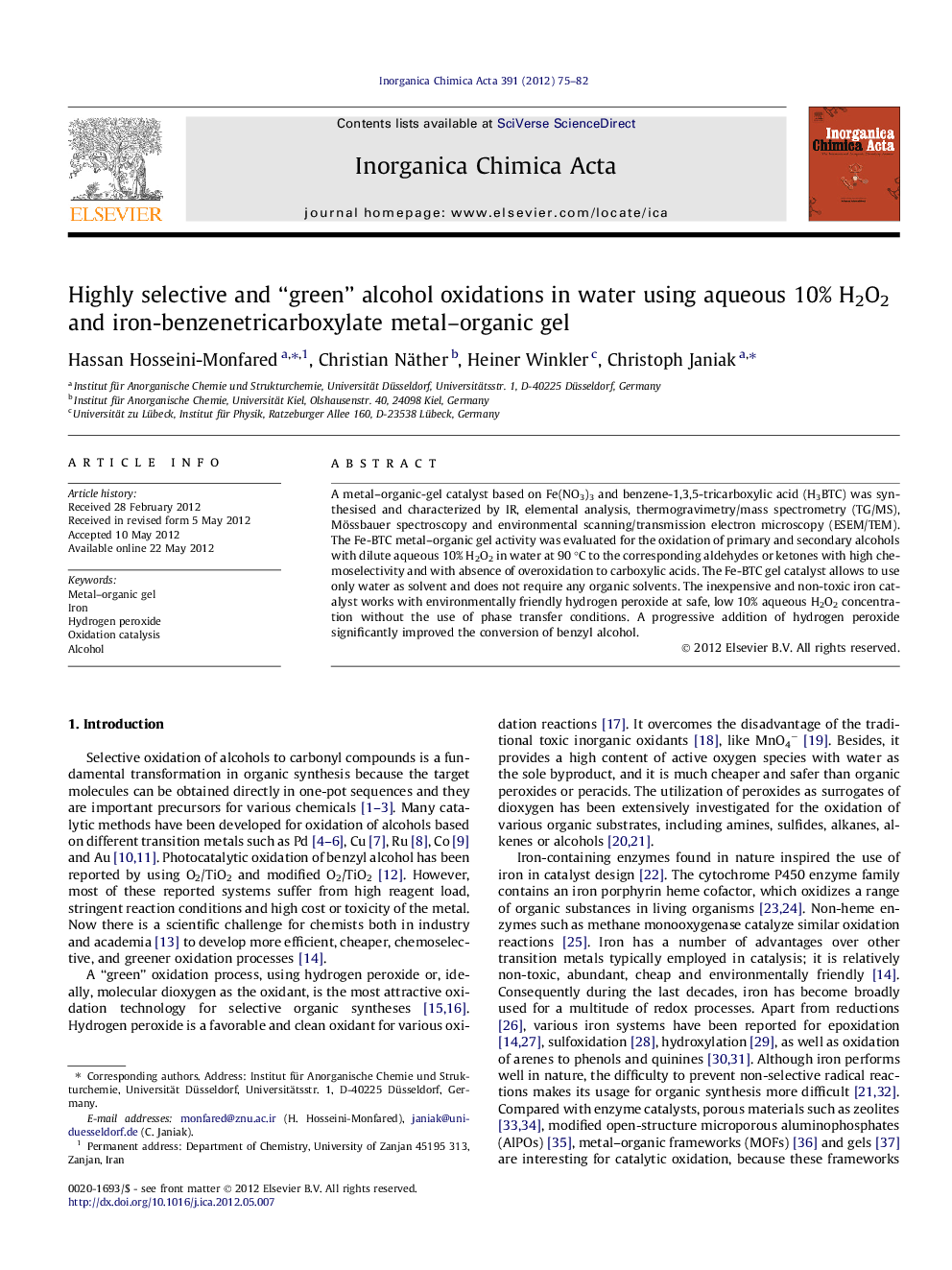| Article ID | Journal | Published Year | Pages | File Type |
|---|---|---|---|---|
| 1312396 | Inorganica Chimica Acta | 2012 | 8 Pages |
A metal–organic-gel catalyst based on Fe(NO3)3 and benzene-1,3,5-tricarboxylic acid (H3BTC) was synthesised and characterized by IR, elemental analysis, thermogravimetry/mass spectrometry (TG/MS), Mössbauer spectroscopy and environmental scanning/transmission electron microscopy (ESEM/TEM). The Fe-BTC metal–organic gel activity was evaluated for the oxidation of primary and secondary alcohols with dilute aqueous 10% H2O2 in water at 90 °C to the corresponding aldehydes or ketones with high chemoselectivity and with absence of overoxidation to carboxylic acids. The Fe-BTC gel catalyst allows to use only water as solvent and does not require any organic solvents. The inexpensive and non-toxic iron catalyst works with environmentally friendly hydrogen peroxide at safe, low 10% aqueous H2O2 concentration without the use of phase transfer conditions. A progressive addition of hydrogen peroxide significantly improved the conversion of benzyl alcohol.
Graphical abstractThe combination of safe 10% H2O2 oxidant, water as solvent and a simple Fe–gel catalyst for the selective and quantitative alcohol oxidation presents a “green” catalysis route.Figure optionsDownload full-size imageDownload as PowerPoint slideHighlights► Water as solvent: alcohol oxidation catalysis without the use of organic solvents. ► Use of the environmental friendly and safe 10% hydrogen peroxide as oxidant. ► Use of inexpensive and non-toxic iron complex in catalysis. ► High aldehyde product selectivity; absence of over oxidation. ► No need to synthesize a complicated ligand.
